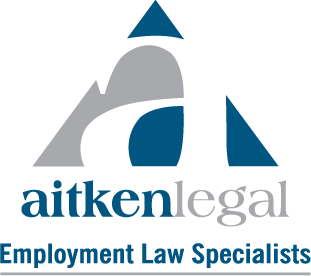EMPLOYMENT UPDATE
New International OHS Standard Published and Federal Court to Consider ‘CASUAL LEAVE’ Issue Again
This month we look at the new international OHS standard published by Standards Australia.
We also discuss the current ‘casual leave’ issue that is set to be considered again by the Federal Court, with a number of parties intervening in a new case brought by Workpac.
New OHS standard published
The world’s first international OHS standard was adopted and published without change by Standards Australia last month.
The international standard was contributed to by Australian experts and outlines international best practice for the management of workplace safety.
The CEO of Standards Australia stated that AS/NZS ISO 45001: 2018 Occupational health and safety management systems – Requirements with guidance for use is available to organisations of every size and in every industry to provide guidance to achieve a minimum standard of workplace health and safety.
Commentators have remarked that the focus of the standard is in line with Australian WHS legislation. That is, WHS as part of an organisation’s overall management system and not simply delegated to a safety manager.
Employers may wish to use the new standard to put in place a recognised OHS management system.
Whilst conformance with, or certification to, the standard is not a requirement, businesses sometimes do this to demonstrate that an effective OHS management system is in place.
Employers should be aware that this may not mean that legal requirements have been met and WHS obligations must still be complied with.
Standards Australia has stated that it will consider the status of the current OHS standard (AS/NZS 4801) which is cited in a range of legislation and that organisations certified to this standard may need to check with their certification body on how any potential transition to the new standard will be implemented.
Federal Court to consider ‘casual leave’ issue again
The ‘casual leave’ issue that has been at the centre of recent discussion looks set to be considered again, with a number of parties intervening in a current Federal Court matter.
The current matter will consider the status of a former employee as casual or permanent and the ability of the employer to offset any entitlements owed against casual loading already paid.
Given the importance of the outcome, it is not surprising that the Federal Jobs and IR Minister, the CFMEU and two employees have all applied to become parties in the matter.
This all comes in the wake of the recent controversial Workpac v Skene decision (see our October update) which found that an employee who was engaged as a casual and paid a casual loading was in fact a permanent employee and entitled to paid annual leave.
The Skene decision attracted plenty of attention with subsequent calls for legislative change, concerns about the implications for employers and class actions being prepared against Workpac and other labour-hire companies in the mining industry.
Workpac has seemingly responded to the Skene decision by commencing these new proceedings and seeking declarations from the Court that:
– former employee Robert Rossato was a casual employee and therefore not entitled to annual leave or any other leave entitlements;
– or alternatively, that the 25% casual loading paid to Rossato included 11% for compensation for annual leave and 5% for personal and compassionate leave which Workpac can set-off against any obligation it may have to Rossato for such entitlements.
Jobs and IR Minister, Kelly O’Dwyer intervened in the proceedings last month.
It is the second part of Workpac’s claim that the Government is focused on – the ability to offset any entitlements (afforded to a permanent employee) against the casual loading payments made, with O’Dwyer stating that:
“We’re very specifically focused on the offsetting arrangements and whether businesses are going to be paying people twice for the same entitlement.”
Whilst employer groups have welcomed the Government’s intervention, some are still calling for legislative change to protect employers against ‘double-dipping’ claims. It will be interesting to see what steps, if any, the Government takes if it doesn’t get the result it wants in the outcome of the proceedings.
Meanwhile, the Federal Court e-file reveals that the CFMEU, Paul Skene, the employee from the Workpac v Skene decision and another Workpac employee, Mr Meaney, have now also sought leave to intervene.
The CFMEU and Mr Skene have stated that they are concerned about the Skene decision being undermined and winding back rights for casual workers.
Mr Meaney is a class action participant and his lawyers have stated they want to ensure the current case did not adversely impact their clients.
The Court has not yet granted leave to intervene to the CFMEU, Mr Skene or Mr Meaney and it appears that the matter may be referred to the Full Bench of the Federal Court for determination next year.
Next steps for employers
If the Federal Court makes the declarations sought by Workpac, the risk of employing long term casuals may be reduced in respect of possible claims that a casual employee was in fact permanent and is owed certain entitlements.
However, the proceedings are still in the case management phase and any decision will be some time away.
In the meantime, see our October update for the steps employers should take in relation to their casual workers or contact us for advice on any areas of concern.
We will keep you updated on the developments in this case and in the casual employment space.
For assistance with OHS or casual employees or any other employment law matter contact Aitken Legal.
Disclaimer: The information contained this article is general and intended as a guide only. Professional advice should be sought before applying any of the information to particular circumstances. While every reasonable care has been taken in the preparation of this update, Aitken Legal does not accept liability for any errors it may contain. Liability limited by a scheme approved under professional standards legislation.
